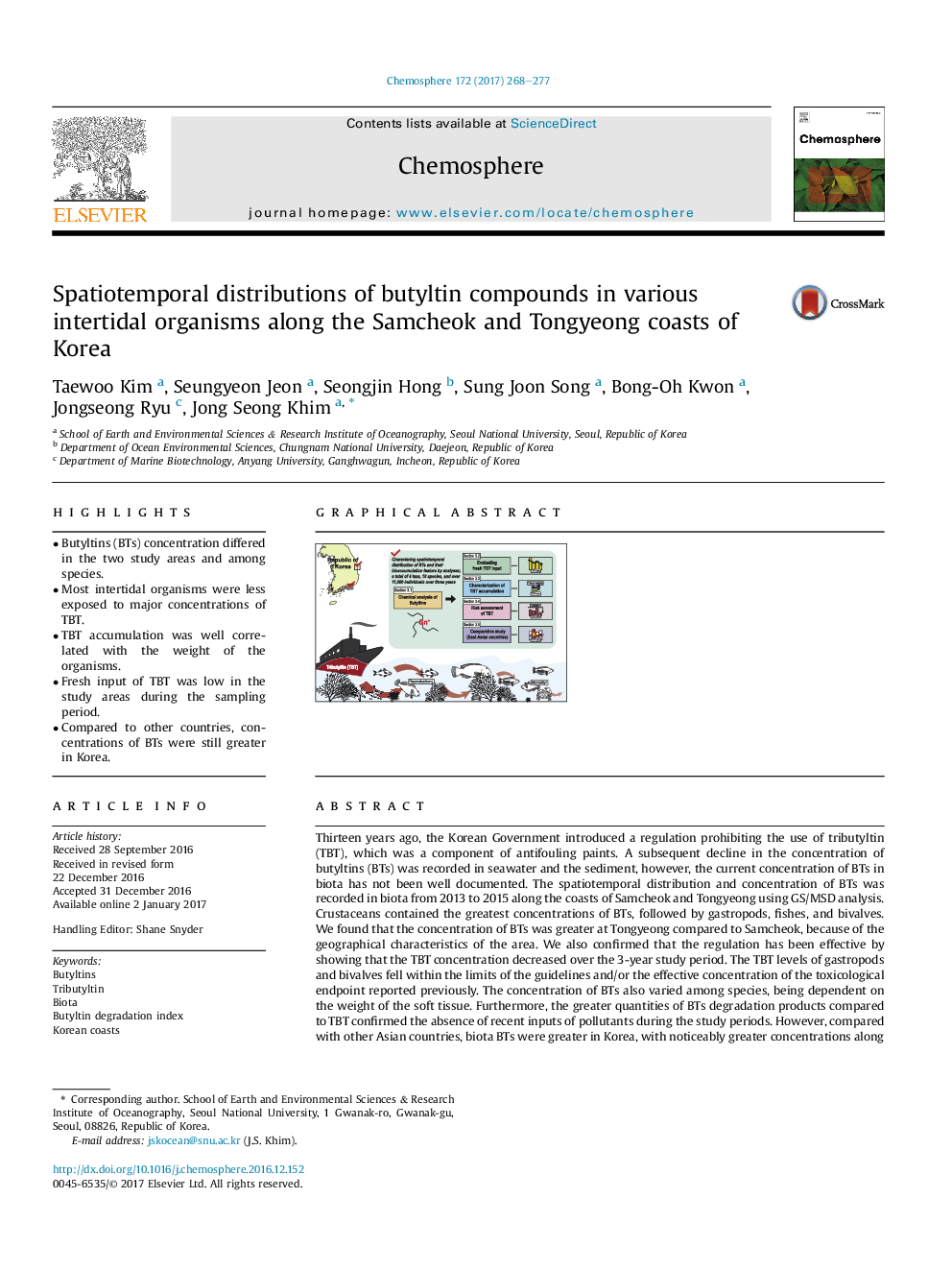| Article ID | Journal | Published Year | Pages | File Type |
|---|---|---|---|---|
| 5747116 | Chemosphere | 2017 | 10 Pages |
â¢Butyltins (BTs) concentration differed in the two study areas and among species.â¢Most intertidal organisms were less exposed to major concentrations of TBT.â¢TBT accumulation was well correlated with the weight of the organisms.â¢Fresh input of TBT was low in the study areas during the sampling period.â¢Compared to other countries, concentrations of BTs were still greater in Korea.
Thirteen years ago, the Korean Government introduced a regulation prohibiting the use of tributyltin (TBT), which was a component of antifouling paints. A subsequent decline in the concentration of butyltins (BTs) was recorded in seawater and the sediment, however, the current concentration of BTs in biota has not been well documented. The spatiotemporal distribution and concentration of BTs was recorded in biota from 2013 to 2015 along the coasts of Samcheok and Tongyeong using GS/MSD analysis. Crustaceans contained the greatest concentrations of BTs, followed by gastropods, fishes, and bivalves. We found that the concentration of BTs was greater at Tongyeong compared to Samcheok, because of the geographical characteristics of the area. We also confirmed that the regulation has been effective by showing that the TBT concentration decreased over the 3-year study period. The TBT levels of gastropods and bivalves fell within the limits of the guidelines and/or the effective concentration of the toxicological endpoint reported previously. The concentration of BTs also varied among species, being dependent on the weight of the soft tissue. Furthermore, the greater quantities of BTs degradation products compared to TBT confirmed the absence of recent inputs of pollutants during the study periods. However, compared with other Asian countries, biota BTs were greater in Korea, with noticeably greater concentrations along the south coast. Thus, further investigation of the distribution of BTs along the Korean coasts is required in the future. In conclusion, our results provide useful information about the recent trends of BTs in Korea.
Graphical abstractDownload high-res image (303KB)Download full-size image
